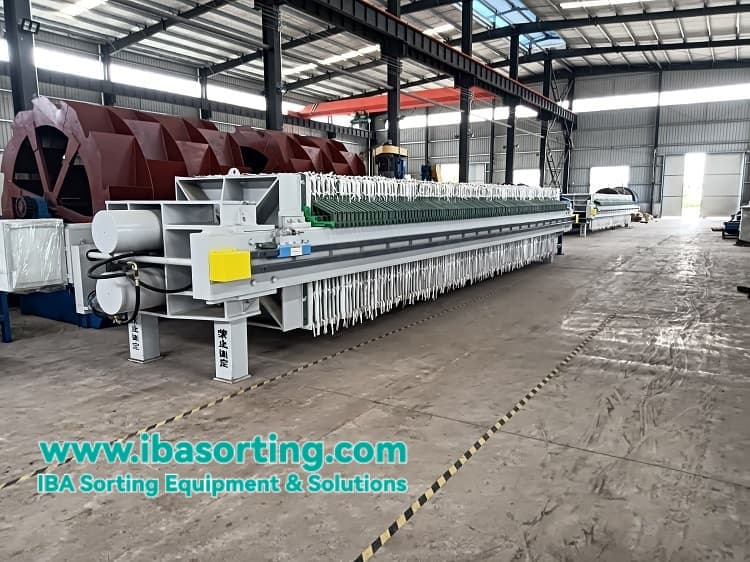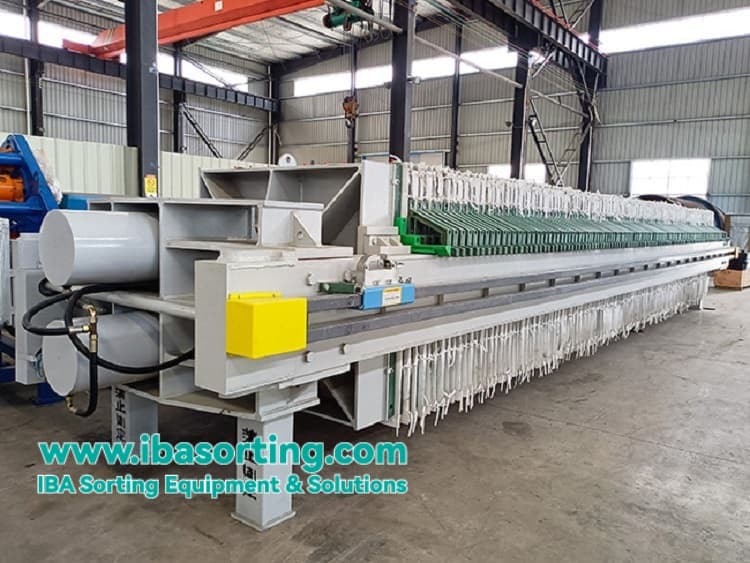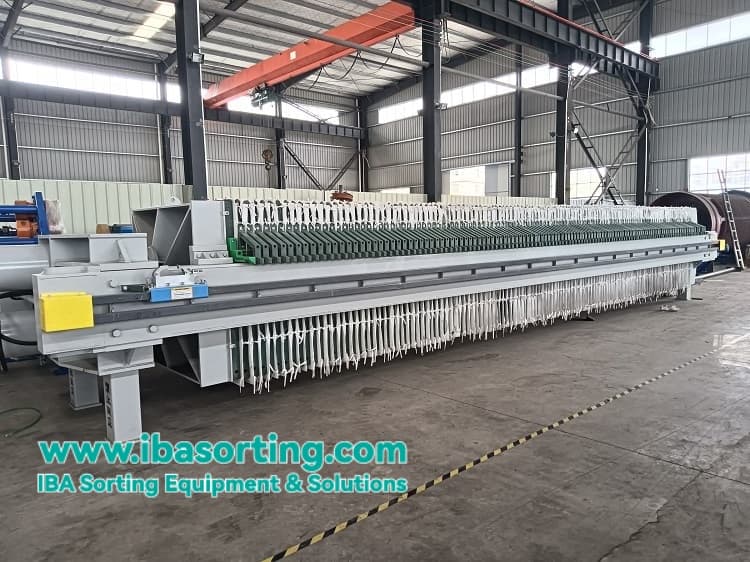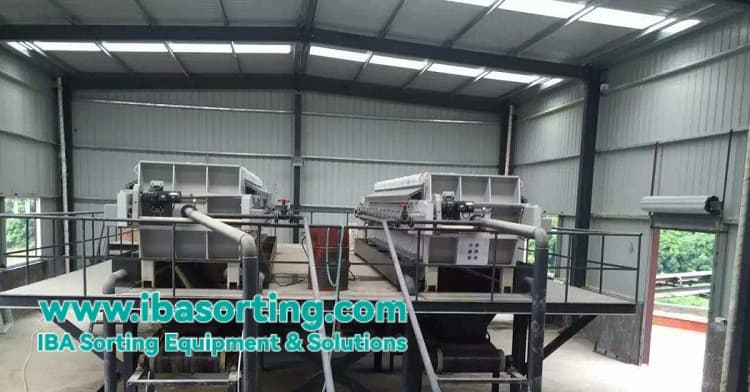Product Overview
Plate and frame filter press is a kind of efficient and reliable solid-liquid separation equipment, especially good at dealing with difficult materials with fine particle size and high viscosity. It realizes thorough solid-liquid separation through high-pressure filtration, and has become an indispensable choice for many industrial fields as the key end processing equipment in the fields of sand and gravel system wastewater treatment, mining tailings dewatering, chemical industry, environmental protection, etc., due to its good processing effect, wide adaptability and simple operation.
Core advantages and features
1. Excellent dewatering performance
-
High-pressure pressing: The working pressure can reach up to 3MPa, which can strongly squeeze the filter cake and produce the mud cake with high solid rate and low moisture content.
-
Strong adaptability: It is especially suitable for dewatering all kinds of viscous and fine materials, and the concentration of suspension can be ≤10%.
-
Clear filtrate: high filtration precision, clear filtrate after separation, can be directly reused or discharged according to the standard.
2. Flexible and reliable structure
-
Simple and solid structure: the main body consists of thrust plate, compression plate, filter plate and solid support frame, stable operation and low failure rate.
-
Flexible filtration area: The number of filter chambers can be customized according to the demand (20-120), so as to flexibly adjust the filtration area and treatment capacity to meet the demand of different scale projects.
-
Small footprint: compact structure, more space-saving than other dewatering equipment under the same processing capacity.
3. Automatic operation
-
Integrated control system: Adopting electric control box + hydraulic system automatic control, realizing automatic operation of filter plate pressing, feeding, unloading, pulling plate and other processes, reducing labor intensity.
-
High-efficiency unloading design: optional automatic plate puller, assisting rapid unloading and improving efficiency.

Technical Parameters (General Range)
| Item |
Parameter/Description |
| Applicable material concentration |
≤ 10% suspension |
| Working Pressure |
0.3 - 1.5 MPa |
| Maximum design pressure |
≥ 3.0 MPa |
| Number of chambers |
Customized according to model (20 - 120) |
| Filter plate material |
Reinforced polypropylene, rubber, cast iron, etc. (optional) |
| Control mode |
PLC automatic control / manual control |
Note: The above are general parameters, specific equipment specifications need to be based on the characteristics of the material and processing capacity for professional selection.
Equipment structure
-
Main structure: thrust plate assembly, compression plate assembly, filter plate and filter cloth, support frame.
-
Transmission system: hydraulic station, cylinder seat assembly, active / passive sprocket (for pulling the plate).
-
Control system: electronic control box (PLC), hydraulic control system, automatic plate puller.

Workflow
-
Compression: hydraulic cylinder to promote the compression plate, all the filter plate compression, the formation of a closed filter chamber.
-
Feed filtration: feed pump will pump the material into the filter chamber, under pressure, the solids are retained by the filter cloth to form a cake, the liquid through the filter cloth discharge.
-
Pressure dewatering (optional): After feeding, the pressure can be maintained or increased to further squeeze the filter cake for dewatering.
-
Unloading: The hydraulic system unloads the pressure, and the transmission device drives the puller to pull away the filter plates sequentially.
-
Unloading: The filter cake is automatically discharged by its own weight, completing a working cycle.
Applicable industries and materials
-
Mining industry: metal ore, non-metal ore tailing dewatering, concentrate filtration.
-
Sand and gravel aggregate: sand washing wastewater, stone powder sludge dewatering.
-
Chemical industry: Separation of pigment, dye and catalyst products.
-
Environmental protection: municipal sewage plant sludge, industrial wastewater treatment sludge dewatering.
-
Others: metallurgy, food, medicine and other industries solid-liquid separation.

Selection Notes and Limitations
-
Limitations:
-
The processing capacity is intermittent and cannot be discharged continuously.
-
The filter cloth is consumable and needs to be cleaned or replaced manually at regular intervals.
-
Compared to the belt filter press, the single cycle capacity is smaller.
-
Selection tips:
-
The actual selection needs to consider the material characteristics (particle size, viscosity, PH value), processing capacity, solid content requirements and other parameters.
-
We provide free technical consultation and material testing, and recommend the most suitable model and configuration for you.
Maintenance
-
Daily inspection: Check whether the filter cloth is damaged, whether the sealing surface of filter plate is clean, whether the oil level and pressure of hydraulic system are normal.
-
Regular maintenance:
-
Monthly: Thoroughly clean the filter cloth.
-
Quarterly: Check and change the hydraulic oil.
-
Yearly: Check the flatness and wear of the filter plate.
-
Precautions: Avoid prolonged high-pressure pressing when the filter chamber is not full, control the feeding pressure within the rated range, and clean up the residues in time after discharging.




